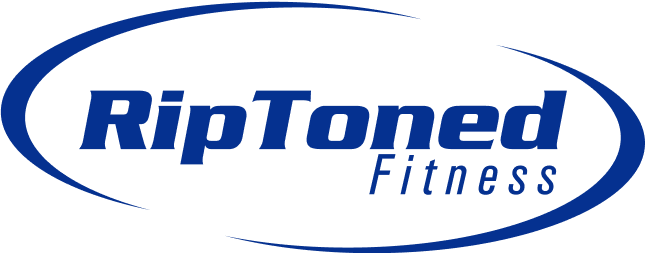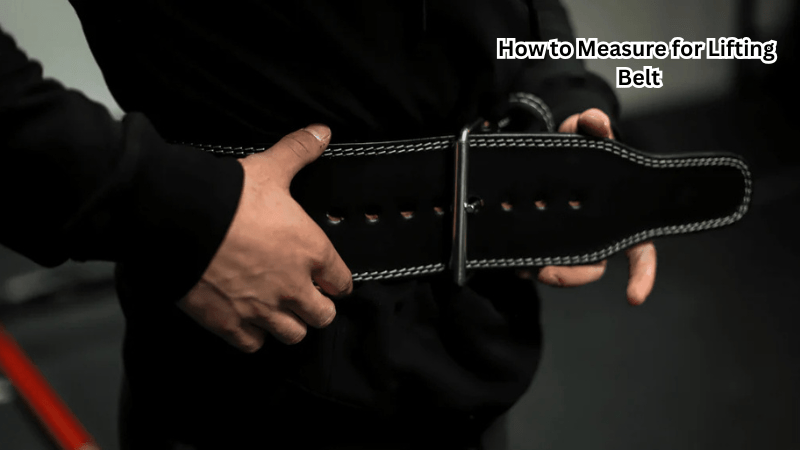Selecting the correct size lifting belt is crucial for maximizing both safety and performance during workouts.
Lifting belts, specially designed to provide support during heavy lifts, can significantly enhance your lifting experience if chosen correctly. An improperly sized belt can lead to discomfort and even potential injury, undermining the benefits you seek.
This guide will walk you through the process of measuring for a lifting belt correctly, ensuring you find the perfect fit.
Using a measuring tape, you can accurately determine your ideal lifting belt size, whether you’re a beginner or an experienced powerlifter. By following the right steps, you’ll ensure that your investment in powerlifting belts is both effective and rewarding.
What is a Lifting Belt?
Before diving into how to measure a lifting belt, it’s essential to understand what it is and its purpose. A lifting belt is a supportive piece of equipment worn around the waist during strength training exercises like squats, deadlifts, and overhead presses. It provides added support to the core muscles and lower back, allowing you to lift heavier weights with proper form while reducing the risk of injury.
Lifting belts are typically made of leather or nylon material and come in different widths, thicknesses, and lengths. They also have a buckle or fastening system that allows for easy adjustability and customizable fit. Some powerlifting federations have specific rules for belt dimensions, so be sure to check before purchasing a belt for competition.
Types of Lifting Belts
There are several types of lifting belts that cater to different needs and preferences. The most common types include:
- Powerlifting Belt: Also known as a weightlifting belt, this is the most popular type among powerlifters. It’s typically 4 inches wide and 10mm thick, providing maximum support for heavy lifts.
- Olympic Weightlifting Belt: This belt is narrower than a powerlifting belt, usually around 2-3 inches in width. It’s designed specifically for Olympic weightlifting movements like snatches and clean & jerks.
- Velcro Belt: This type of belt uses velcro instead of a buckle or fastening system for quick and easy adjustability. It’s typically thinner and lighter than other types of lifting belts, making it a popular choice for CrossFit athletes.
- Nylon belts: These belts are made of lightweight, flexible material and are a popular choice for bodybuilding or general fitness training.
Belt material and construction can also vary, with some belts being single or double-layered and others having additional padding for added comfort. Ultimately, the type of lifting belt you choose will depend on your specific needs and preferences.
How Does a Weightlifting Belt Work?
A weightlifting belt works by providing support and stability to the core muscles and lower back during heavy lifts. The combination of a wide and rigid belt helps to increase intra-abdominal pressure, which supports the spine and prevents excessive movement while lifting. Additionally, weightlifting belts can help improve performance by allowing you to lift heavier weights with proper form.
When measuring a weightlifting belt, it’s important to consider your waist circumference as well as potential weight fluctuations. A properly fitting weightlifting belt should sit snugly around your waist without being too tight or uncomfortable. As your abdominal muscles expand during a lift, the belt will provide additional support, ensuring proper form is maintained throughout the movement.
It’s also crucial to note that a weightlifting belt is not meant to be worn during all exercises or for extended periods. It should only be used for lifts that put stress on the spine, such as squats and deadlifts. Wearing a weightlifting belt can also help reinforce proper lifting techniques by reminding you to engage your core muscles and maintain good posture during exercises.
Why to Use a Lifting Belt?
There are so many benefits to using a lifting belt, regardless of your fitness level or goals. The primary benefits include:
- Increased Safety: A properly fitting weightlifting belt can significantly reduce the risk of injury during heavy lifts by providing support and stability to the core muscles and lower back.
- Improved Performance: By allowing you to lift heavier weights with proper form, a weightlifting belt can help improve your overall performance and results in the gym.
- Enhanced Mind-Muscle Connection: Wearing a weightlifting belt can help reinforce proper lifting techniques by reminding you to engage your core muscles and maintain good posture during exercises.
- Added Confidence: Many lifters feel more confident when wearing a lifting belt, knowing they have added support and protection during their lifts.
- Injury Prevention: By reducing the risk of injury, a lifting belt can help prevent potential setbacks or interruptions in your training routine.
Lastly, it's worth mentioning that weight fluctuations can impact how a weightlifting belt fits over time. As you gain muscle or lose body fat, your waist circumference may change, affecting the fit of your belt.
How to Measure for Lifting Belt?
Now that you understand the basics of weightlifting belts and their benefits, it’s time to learn how to measure for one. Here are the steps to follow:
Take Your Waist Measurement:
First, you need to determine your waist size by measuring around the narrowest part of your torso, usually just above the belly button. This measurement will help you determine which lifting belt sizes are most suitable for you.
Refer to a Belt Size Chart:
Most lifting belt manufacturers provide a sizing chart on their website or product packaging that correlates waist measurement with the correct belt size. Be sure to refer to this chart before making a purchase.
Try Different Types of Belts:
It’s essential to try on different types of belts, as each may fit differently, even if they have the same waist size listed. For example, lever belts and prong belts may fit differently due to their different fastening systems.
Ensure Proper Fit:
When trying on a belt, make sure it sits snugly around your waist without being too tight or uncomfortable. It should be firm enough to provide support but not restrict your breathing or movement.
Consider Weight Fluctuations:
Keep in mind that weightlifting belts may fit differently as your body composition changes. If you anticipate significant weight fluctuations, consider purchasing an adjustable or customizable belt.
Consult a Professional:
If possible, consult with a professional at your gym or local sporting goods store for help finding the right size and type of lifting belt for your specific needs and goals.
By following these steps, you can ensure you are purchasing the correct belt size for your waist measurement and lifting style. A properly fitting weightlifting belt can make a significant difference in your training, so it’s worth taking the time to find the right one for you.
Do All Belts Have the Same Sizing Charts?
Weightlifting belt sizing charts It’s essential to note that not all lifting belts have the same sizing charts. Different manufacturers may have slight variations in their measurements, so it’s crucial to refer to each specific brand's size chart when making a purchase. Additionally, the type of belt can also impact its fit.
For example, a leather belt may have different sizing than a fabric or velcro belt due to the material and how it stretches over time. It’s always best to measure your waist using a tape measure and refer directly to the manufacturer's size chart rather than relying on your pant size as an indicator. This ensures you get an accurate weightlifting belt fit for optimal support and performance in the gym. So, always refer to the correct weightlifting belt sizing charts for the most accurate fit.
What Are the Factors That Affect Weight Belt Size?
There are a few factors that can affect the size of a weightlifting belt, including:
- Body Composition: As mentioned earlier, weight fluctuations and changes in body composition can impact how a lifting belt fits over time. This is due to changes in waist measurement.
- Material: Different materials used in weightlifting belts may have different levels of stretch or give, affecting the overall fit.
- Belt Type: Lever belts and prong belts may have slightly different sizing charts due to their fastening systems.
- Manufacturer Variations: As discussed, each manufacturer may have slight variations in their sizing charts, so it’s essential to refer directly to each brand's chart for accurate measurements.
By considering these factors and following the steps outlined above, you can ensure a proper and comfortable fit for your weightlifting belt. Remember, the same width doesn't mean the same size, so always refer to specific weightlifting belt sizing charts for the best fit.
How Tight Should a Belt Fit?
When it comes to wearing a weightlifting belt, it’s important to find the right balance between support and comfort. The belt should sit snugly around your waist without being too tight or restrictive. Here are some tips for finding the perfect fit:
- Avoid Over-Tightening: While a lifting belt is meant to provide support, wearing one that is too tight can actually hinder your performance. It may restrict your breathing and limit your range of motion, ultimately hindering your lifts.
- Don’t Rely on Pant Size: As mentioned before, relying on your pant size as a measurement for a weightlifting belt can be misleading. Your waist measurement will be more accurate in determining the correct size.
- Test the Fit with Movements: When trying on a belt, make sure to test its fit while performing movements similar to those in your lifting routine. This will give you a better idea of how the belt will feel and function during your workouts.
FAQs
Should I size up or down to lift a belt?
It’s best to refer to the specific brand's size chart and take an accurate waist measurement for the most optimal fit. Sizing up or down may result in a belt that is either too loose or too tight, compromising its effectiveness.
Can you wear a weightlifting belt during all exercises?
Weightlifting belts are typically worn during compound lifts such as squats, deadlifts, and overhead presses. It is not recommended to wear them during isolation exercises as they can hinder the proper form and engagement of targeted muscles.
What if my waist measurement falls between two sizes on the chart?
In this case, it’s best to try on both sizes and see which one feels more comfortable and provides adequate support. Remember, the belt should fit snugly without being too tight or restrictive.
Conclusion
In conclusion, accurately measuring for a lifting belt is essential to ensure you select the correct size, which is vital for enhancing both safety and performance during your workouts. By following the detailed steps outlined in this guide, you are taking the necessary precautions to avoid the discomfort and potential injuries associated with an improperly fitted belt.
A properly sized belt provides the needed support, allowing you to lift with confidence and efficiency. Remember to use a measuring tape accurately and consider professional advice if needed. Investing time in this process guarantees a more effective and enjoyable lifting experience, making your commitment to fitness both rewarding and safe.

Click Here to Learn More About the Rip Toned Lifting Belt. Discover the proper way to measure for your lifting belt to ensure optimal fit and performance.

